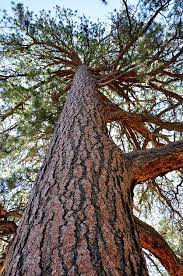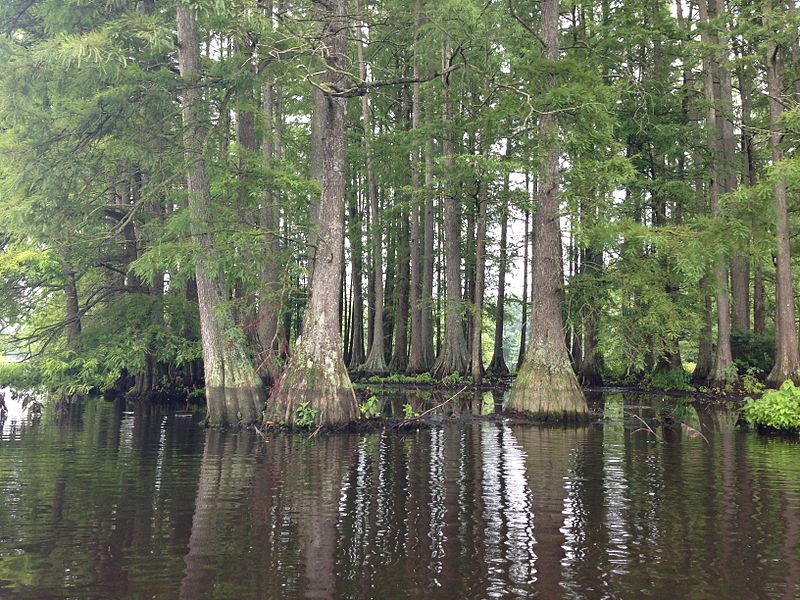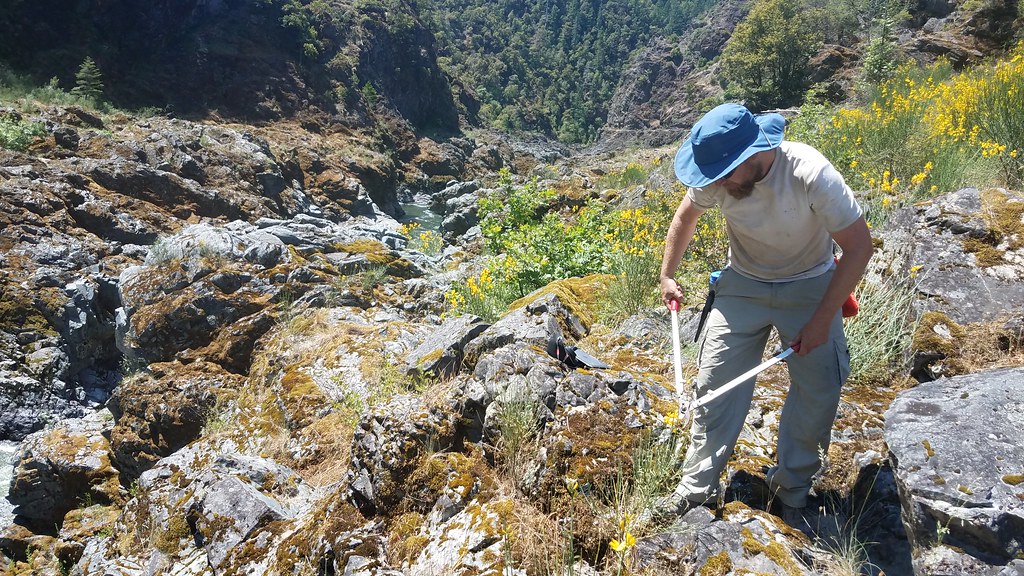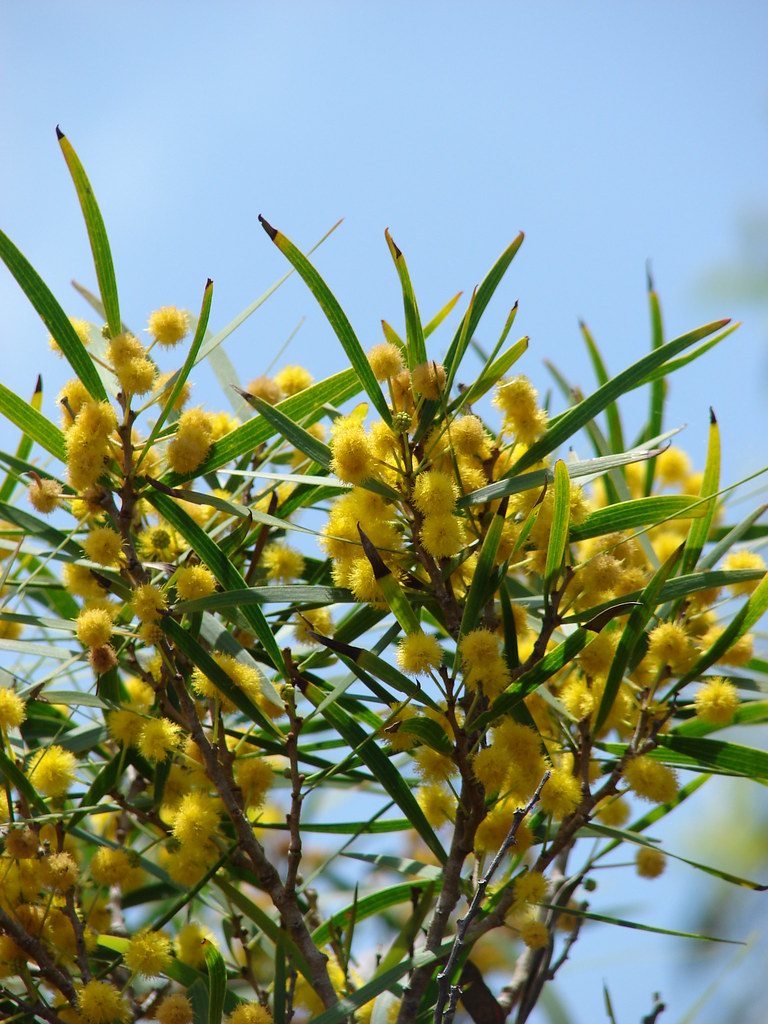Have you noticed, as I have, a spurt of interest in conservation of trees? I can rejoice that more people now focus on this!!!!
I have blogged previously about international and national efforts to determine not only native species deserving conservation priority – by the Morton Arboretum and IUCN but also species most threatened by non-native pests. I have also reported on growing attention to breeding tree resistance to non-native pests.
Some scientists are now focusing on species’ regeneration as a way to understand the probable future of both native and introduced species. I hope that scientists will integrate these new data with existing information on the impacts of invasive non-tree plants and tree-killing introduced pests. We need such a comprehensive picture. That will be a challenge!
Also, I hope attempts to set conservation priorities will influence decisions by governmental and non-governmental funders – and those who influence them! So far, I see little evidence that these key players are paying attention. Some Forest Service scientists and academics are pushing for expanded resistance-breeding efforts. Others are writing sophisticated analyses of non-native pests’ ecosystem impacts. But is the USDA leadership supporting stronger pest-prevention measures? Or funding for research on restoration of species? Are conservation NGOs addressing introduced forest pests?
Here, I summarize new work by Kevin Potter and his colleagues, published in two papers (full references at the end of this blog). After reading my summary, I’d like to know: What do you think? Do you agree with the focus on individual species’ regeneration to set conservation and control priorities? Do you agree with the priority species and geographic regions they suggest?? How should we resolve inconsistencies compared to the priorities suggested by the IUCN and Morton Arboretum? If you do agree, how would you suggest we move forward? If not, what approach do you think would be more useful?
A New Approach to Evaluating Species at Risk
Potter and Riitters (2022) point out that a species’ successful regeneration is key to its population’s future genetic diversity. That, in turn, determines the organisms’ ability to adapt to environmental stress and change. The latter includes, but is not limited to, climate change. Because trees are immobile and long-lived, their populations probably require substantially more genetic variation than those of other kinds of plants.
Potter and colleagues (both articles) used FIA survey data to examine regeneration rates by both tree species native to the continental United States (= CONUS) and non-native tree species introduced to CONUS, Hawai`i, or Puerto Rico. I rejoice that they have included these tropical islands, which are part of the United States and are centers of plant endemism. (Two other blogs provide details on their findings in Hawai`i and Puerto Rico.
Native Trees at Risk: Focus on Poor Regeneration
For CONUS, Potter and Riitters (2022) asked whether 280 native forest tree species are regenerating at sustainable levels, both across their full ranges and in regional portions of their ranges, defined by provisional seed zones (an area within which plant materials are assumed to be adapted). Tree species for which FIA surveys placed 75% of the stems in the sapling or seedling classes are determined to be regenerating at sustainable levels. Tree species exhibiting lower proportions of their stems in these “small tree” classes are said to be failing to regenerate adequately.
Potter and Riitters (2022) found that 46 of the 280 native tree species (16.4%) might be at risk of losing important levels of genetic variation (see the list of species in Table 2 of the article). These included high proportions of species evaluated in the following genera: two of three Platanus species; two of four Nyssa species; about 40% of Juniperus and Pinus; and five of 46 Quercus species (10.9%).
[Many areas of the eastern forest, especially in the Mid-Atlantic region, are reported by Stout, Hille, and Royo (2023) to be have insufficient advance regeneration to replace canopy trees.]
Some species appear to be headed toward outright extinction, not only loss of genetic diversity. These include four relatively rare species in California: Pinus muricata, Platanus racemosa, Pseudotsuga macrocarpa, and Sequioadendron giganteum. No seedlings or saplings are recorded on the plots on which they occurred. I note that Platanus racemosa in southern California is being attacked and killed by the Fusarium dieback vectored by the polygamous and Kuroshio shot hole borers.
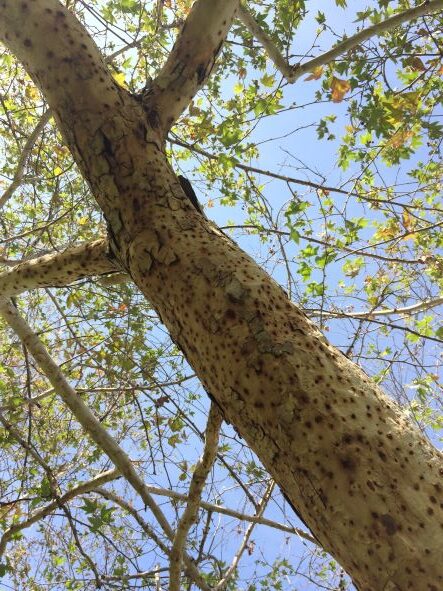
I find it alarming that a few of the possibly at-risk species have extremely wide distributions. These are Populus deltoides (eastern cottonwood), Platanus occidentalis (American sycamore), and ponderosa pine (Pinus ponderosa). Another group of species are classified as at potential risk in all their seed zones: Juniperus californica, Juniperus osteosperma, Pinus pungens, and Quercus lobata (valley oak). I note that valley oak is also under attack by the recently introduced Mediterranean oak borer. Its vulnerability is exacerbated by its relatively small range.
Potter and Riitters (2022) found distinct geographic hot spots: 15 at-risk species occur primarily in the Southeast and 14 species are in California; both represent nearly a third of the at-risk species.
In general, high rates of regeneration failure are seen in the West. Nine at-risk species (19.6% of the 46) grow in the Southwest, eight in Texas (17.4%), and four in the Rocky Mountains (8.7%). However, the Northeast and Midwest are not immune. Seven species from the former and six from the latter are also regenerating poorly. Considering pines alone, seven of 14 at-risk speciesare in the West and five in the Southeast.
Seed Zones: a Proxy for Local Genotypes
As I noted at the beginning, Potter and Riitters (2022) used USDA Forest Service provisional seed zones as a proxy for areas in which a species is presumably locally adapted. In addition to the 46 species considered failing to regenerate adequately throughout their entire ranges, Potter and Riitters (2022) determined that another 39 species are at potential risk of losing locally adapted genotypes. That is, their regeneration levels fell below the threshold in at least half of the seed zones in which they occurred. These potentially at-risk species are in the same taxonomic groups: 13 pines (33.3% of the 39 species in the category), six junipers (15.3%), and three oaks (7.7 %). These, too are concentrated in the Southeast and California: 40% are in the former — including both bald-cypress species — and 30.8% are in California. Another seven species (17.9% of the 39) are in Texas. The Midwest is home to seven species, the Northeast and Southwest each has five species (12.8%), and the Rocky Mountain region has three species (7.7%).
The seed zones with the largest numbers of species regenerating poorly are in the East, specifically the central Great Lakes region, western New York and Pennsylvania, along the Mid-Atlantic and New England coasts, and the coastal plain from southern South Carolina to eastern Texas. Potter and Riitters (2022) say these areas have such high numbers of at-risk species because they are home to so many tree species. I note [although Potter and Riitters (2022) do not] that these regions have also experienced severe levels of tree mortality due to the emerald ash borer (mature and young trees), beech leaf disease (primarily young trees), and laurel wilt disease (sub-canopy trees).
A different geographic pattern appears when considering the proportion — rather than the number — of species facing deficits in regeneration. In several Western regions, 60 – 100% of the tree species fell below the study’s threshold of 75% of recorded stems being in the sapling or seedling sizes. These seed zones are found particularly in parts of California, the Southwest, the Great Basin, and the Pacific Northwest. In none of the seed zones in the East are more than 50% of tree species in the category of potentially losing genetic variation. The implication is that while more species might be lost from parts of the East, the loss of fewer species in some Western seed zones could result in larger impacts on the composition, structure, and function of forest ecosystems there.
Potter and Riitters (2022) say that their approach has limitations because it relies on an assumption that a lack of smaller (i.e., younger) trees is an indication that a species has inadequate regeneration across all or part of its distribution and thus is vulnerable to losing genetic variation. They are not able to quantify directly the genetic variation within most forest tree species. In addition, the choice of 75% or fewer of all trees being seedlings or saplings threshold as the threshold is arbitrary. They believe these decisions are defensible.
Potter and Riitters (2022) hope that indicators of forest sustainability such as this can bridge the gap between scientists, forest managers, policy makers, and other stakeholders.
Further, the authors hope that this approach will help prioritize species most in need of: 1) monitoring for genetic diversity, 2) in situ conservation, and 3) ex situ propagule collections. In a future blog I will compare the species highlighted by Potter and Riitters (2022) to the earlier priority list developed by the IUCN and Morton Arboretum. Finally, the focus on regeneration levels could help scientists design representative sampling protocols for range-wide ex situ propagule collections for genetic diversity studies using molecular markers.
Applying This Analysis to Invasions by Non-native Trees
In a second study, Potter, Riitters, and Guo (full citation at end of this blog) flipped the focus: they used the same approach to quantify the degree of invasion by non-native trees in the U.S. I’ve blogged about this study, in general, here. Also see my separate blogs for its welcome application to Hawai`i and Puerto Rico.
Again, Potter, Riitters, and Guo hope their approach will assist in the crucial, difficult task of distinguishing between high-impact and less threatening non-native species. They warn, however, that the FIA survey procotol does not suit the needs of an early detection system.
Differentiating Invasive Tree Species’ Impacts
Potter, Riitters, and Guo note that thousands of non-native tree species have been planted around world to provide an extensive list of ecosystem services. Globally, 400 tree species have been recognized as naturalized (= consistently reproducing) or invasive (= spreading) in areas outside their native ranges. Contrary to some expectations, even relatively undisturbed forests are affected by invasive plants. In the continental United States, many fewer invasive plant species are trees than other forms/habits – shrubs, forbs, gramminoids. On the tropical islands, a much higher proportion of invasive plants are trees.
Lugo et al. (2022; full citation at end of this blog) find non-native tree species occupy a tiny fraction of the forest area of the continental United States [= CONUS], i.e., only 2.8% of the area, and only 0.4% of all tree species recorded in the FIA plots. However, these non-native tree species are widespread. They are found in 61% of forested ecosections in CONUS. Also, they are becoming more common in invaded sites. [Ecosections are divisions within 37 ecological provinces in the hierarchical framework developed by Cleland et al. (2007). There are 190 ecosections in U.S. forest biomes.]
Potter, Riitters, and Guo categorized those non-native tree species with at least 75% of stems detected by FIA surveys to be in sapling or seedling size as highly invasive. In other words, these species are successfully reproducing after reaching the canopy. So they might be more likely to alter forest functions and ecosystem services than those reproducing less robustly. They classified as species with 60 – 75% of recorded stems in these “small tree” categories as “moderately invasive.”
Potter, Riitters, and Guo suggest that control might more productively target the moderately invasive species in geographic regions where they have spread less so far – so presumably fewer seed-bearing mature specimens are present. They list as examples Picea abies, Pinus sylvestris, and Paulownia tomentosa.
In CONUS, FIA protocols specify reporting of 30 non-indigenous tree species.
| Acer platanoides |
| Ailanthus altissima |
| Albizia julibrissin |
| Alnus glutinosa |
| Castanea mollissima |
| Casuarina lepidophloia |
| Cinnamomum camphora |
| Citrus sp. |
| Elaeagnus angustifolia |
| Eucalyptus globulus |
| Eucalyptus grandis |
| Ginko biloba |
| Melaleuca quinquenervia |
| Melia azedarach |
| Morus alba |
| Paulownia tomentosa |
| Picea abies |
| Pinus nigra |
| Pinus sylvestris |
| Populus alba |
| Prunus avium |
| Prunus persica |
| Salix alba |
| Salix sepulcralis |
| Sorbus aucuparia |
| Tamarix spp |
| Triadica sebifera |
| Ulmus pumila |
| Vernicia fordii |
About half of these –16 species – qualified under the Potter, Riitters, and Guo criteria as highly invasive: Acer platanoides, Ailanthus altissima, Albizia julibrissin, Cinnamomum camphora, Elaegnus angustifolia, Melia azedarach, Melaleuca quinquenervia, Morus alba, Picea abies, Pinus nigra, Prunus avium, Salix alba, Salix sepulcralis, Triadica sebifera, Ulmus pumila, Vernicia fordii. An additional four taxa are ranked as potentially highly invasive: Tamarix; Eucalyptus grandis and E. globulus, Populus alba.
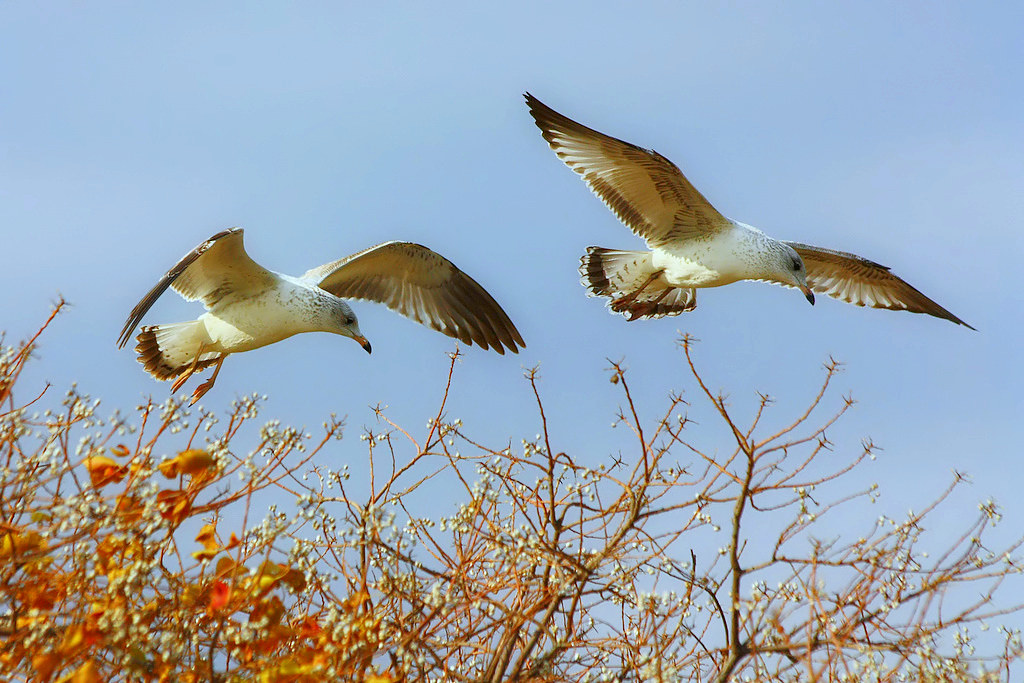
I ask : Do YOU agree that these taxa are the most important to be tracking as potentially invasive in forests of the continental United States?
Potter, Riitters, and Guo distinguish between the most “common” and the most “widespread” invasive tree species – although they do not define the differences. Some of the most “common” or “widespread” species are not a surprise: Ailanthus altissima, Triadica sebifera (syn. Sapium sebiferum), and Acer platanoides. Ailanthus is categorized as highly invasive in 39 of 44 ecoregions in which it occurs. It is also notoriously difficult to manage. Triadica sebifera is classified as highly invasive in every one of the 20 ecoregions in which it occurs. It produces prolific seed crops that are widely dispersed by birds and water. It can invade both disturbed and undisturbed habitats. Some of the common or widespread species do surprise me: Ulmus pumila, Morus alba and Picea abies.
Most of the non-native tree species occur on only 2% of plots in the ecoregions in which they occur. However, some highly invasive trees exceed this level:
Triadica sebifera is detected on 8.6% of plots on average across 20 ecoregions;
Ulmus pumila is detected on 3.7% of plots across 39 ecoregions;
Elaeagnus angustifolia is detected on 3.3% of plots in 13 ecoregions;
Melaleuca quinquenervia is detected on 2.7% of plots in 4 ecoregions.
A. altissima is detected on only 2% of plots in the 44 ecoregions. This is surprising to me. I see it everywhere in the Mid-Atlantic – and elsewhere!
[In USFS Region 9 (24 states in the Northeast and Midwest), FIA surveys in 2019 detected Ailanthus on only 3% of plots, Norway maple and Siberian elm each on only 1% of plots (Kurz 2023).]
Eastern U.S. forests are invaded at rates several times those in Western forests, both as a proportion of plots that are invaded and the diversity of plant growth forms. The probability of invasion is highest in Eastern forests that are relatively productive and located in fragmented landscapes that contain developed or agricultural land. Non-native invasive trees are most prevalent along the Gulf Coast and in Mid-Atlantic and Midwestern States. Highly invasive non-native trees are most diverse in the ecoregions of the Mid-Atlantic and Southeast. I note that these regions also rank high in numbers of native tree species determined by Potter et al.’s other study to be reproducing an unsustainable levels.
The study found that non-native trees are almost entirely absent from the Rocky Mountain States and Alaska. However, I have seen Ailanthus in riparian areas of Utah, Arizona, and New Mexico. While few non-native tree species are recorded from ecoregions along the Pacific Coast, those areas are heavily invaded by other types of plants. Lugo et al. say those shrubs and forbs are not interfering with forest regeneration. Do YOU agree?
On tropical islands included in the study – Hawai`i and Puerto Rico – the situation is very different. Together, these islands’ tree canopy covers less than 0.5% that of the area in the lower 48. Hawai`i is recognized as a global hotspot of non-native species richness. Naturalized non-native plant taxa constitute about half of the Hawaiian flora. The US Forest Service tracks twice as many non-native tree species in Hawai`i (62) than over the entire continental U.S. plus Alaska.
Of these 62 species, Potter, Riitters, and Guo identified 26 tree species as either highly or moderately invasive, either already or potentially highly invasive, three as moderately invasive, seven as potentially moderately invasive. In general, the richness of non-native tree species is higher in lower-elevation ecoregions, especially the lowland/leeward dry and mesic forests on O’ahu and lowland wet and mesic forests of the Big Island. [The article makes a brief reference to the probable role of rapid ʻōhiʻa death opening the canopy of the mesic and wet forests, thereby facilitating plant invasions.] Most Hawaiian ecoregions, especially those on O’ahu and Hawai’i Island, had higher non-native tree species richness than even the most highly invaded ecoregions in the lower 48 states. Parts of O’ahu & Maui had the most non-native tree species classified as highly invasive.
The Caribbean archipelago – including but not limited to Puerto Rico – has a lower proportion of non-native plant species than Hawai’i — 17% of plant species are not native. However, their presence is even higher: two-thirds of Puerto Rico’s forests comprise novel tree assemblages. This is probably because Puerto Rico has half the land area of the Hawaiian archipelago and has been part of global trade networks for 500 years instead of 200. Potter and colleagues identified 17 non-native tree species as highly invasive, 16 as potentially highly invasive, and two as moderately invasive.
On the continent only seven of 30 non-native tree species occurr on at least 2% of FIA plots across the ecoregions in which they are inventoried. Hawai’i is stunningly different: 56 of 62 species occurr on at least 2% of plots across ecoregions on average; 24 species are present on at least 10% of plots on average. One species, Psidium cattleyanum, is present on nearly half of surveyed plots across 13 ecoregions! In Puerto Rico, 21 species occurred on at least 2% of the FIA plots.
Potter, Riitters, and Guo could not assess the invasiveness of several species that occurred only as small stems in a couple of plots. There are 11 such species on Hawai`i, eight on Puerto Rico. These species might be in the early stages of widespread invasion, or they might never be able to reproduce and spread. Despite the uncertainty, the authors suggest that eradication or control efforts targetting these species might be more cost-effective since presumably few trees have reached reproductive age yet. In Puerto Rico, they single out Schinus terebinthifolius, since it is already recognized as moderately invasive in Hawai`i [I add – seriously invasive in nearby Florida!]. However, they also emphasize the threat from one of the widespread species, Syzgium jambos, because it is a shade-tolerant species that can form dense, monotypic stands under closed canopies
I have posted separate blogs providing more details on the invasive tree species in Hawai`i and Puerto Rico.
Limits of the FIA Dataset
As in the study of native species regeneration, Potter, Riitters, and Guo specify limits arising from use of the FIA dataset. Two seem particularly pertinent to evaluation of the situation on the tropical islands.
First, they cataloged only those non-native tree species chosen by the FIA program administrators to track in the three major regions. Again, I ask YOU whether you agree with the species being recorded. Should others species be included? Should some of these species be dropped?
Second, the survey protocol does not differentiate between sites with significantly different status and history. For example, non-native trees growing on abandoned agricultural sites are counted the same way as those growing in presumably old-growth forests. They conclude that including such sites might explain the records of Eucalyptus and pine species in surveys on the islands.
Finally, as noted in the other study, the program incorporates plots that contain at least 10% canopy cover by live trees or had such cover in the past. The inventory has not included urban parks – although in recent years an urban inventory protocol has been developed.
I remind you that Potter, Riitters, and Guo warned that the FIA inventory is not designed to detect newly introduced species that are early in the invasion process.
SOURCES
Kurtz, C.M. 2023. An assessment of invasive plant species in northern U.S. forests. Res. Note NRS-311. http://doi.org/10.2737/NRS-RN-311
Lugo, A.E., J.E. Smith, K.M. Potter, H. Marcano Vega, and C.M. Kurtz. 2022. The Contribution of NIS Tree Species to the Structure and Composition of Forests in the Conterminous United States in Comparison with Tropical Islands in the Pacific & Caribbean. USDA USFS General Technical Report IITF-54.
Potter, K.M and Riitters, K. 2022. A National Multi-Scale Assessment of Regeneration Deficit as an Indicator of Potential Risk of Forest Genetic Variation Loss. Forests 2022, 13, 19. https://doi.org/10.3390/f13010019.
Potter K.M., Riitters, K.H. and Guo, Q. 2022. Non-native tree regeneration indicates regional and national risks from current invasions. Frontiers in Forests and Global Change doi: 10.3389/ffgc.2022.966407
Stout, S.L., A.T. Hille, and A.A. Royo. 2023. Science-Management Collaboration is Essential to Address Current & Future Forestry Challenges. IN United States Department of Agriculture. Forest Service. 2023. Proceedings of the First Biennial Northern Hardwood Conference 2021: Bridging Science and Management for the Future. Northern Research Station General Technical Report NRS-P-211 May 2023
Posted by Faith Campbell
We welcome comments that supplement or correct factual information, suggest new approaches, or promote thoughtful consideration. We post comments that disagree with us — but not those we judge to be not civil or inflammatory.
For a detailed discussion of the policies and practices that have allowed these pests to enter and spread – and that do not promote effective restoration strategies – review the Fading Forests report at http://treeimprovement.utk.edu/FadingForests.htm
or
